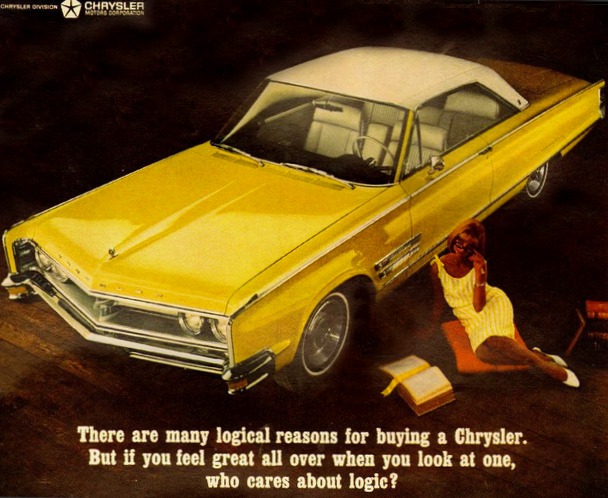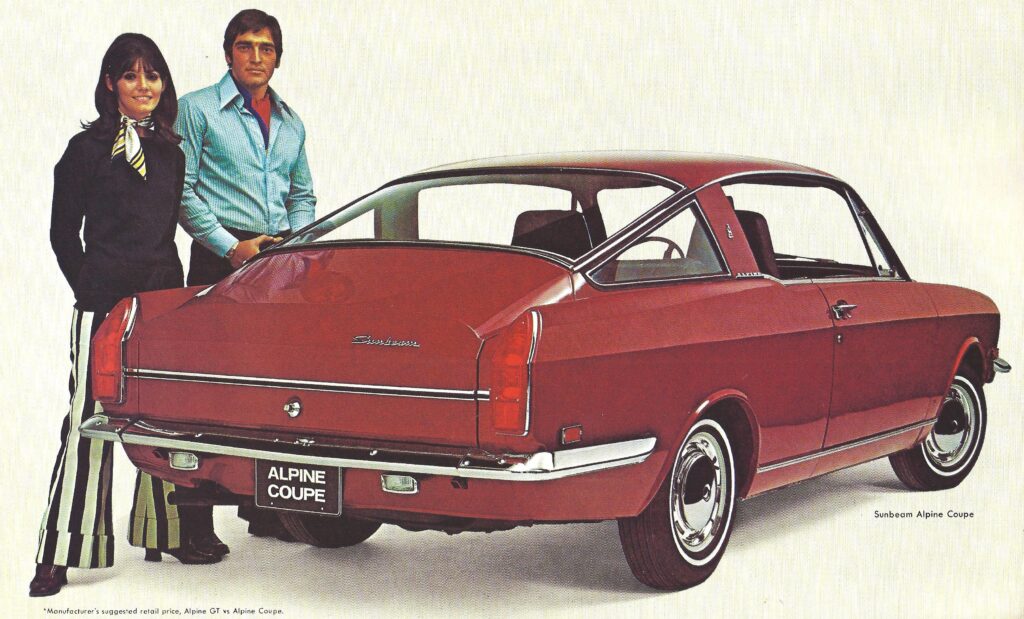Literature and Theory
This research will examine the relationship between gender norms and the marketing of automobiles. The automobile has been instrumental in shaping gender norms and expectations throughout history, and has been closely related to masculinity and femininity. The marketing of cars has reflected changes to or stagnation in gender norms which tend to flow with economic changes. The economy and gender are closely intertwined, and while traditional gender norms have had and continue to have negative effects on women they also ended up enabling them as consumers. As females obtained more consumer sovereignty, their power to affect the market increased, forcing auto companies to adapt. Commercials depict men and women differently in order to convey social meaning (Goffman 1979). The underlying meanings are interpreted by the consumer and reinforce traditional or progressive norms. Women no longer wanted to be portrayed in car commercials as submissive to men. As a result, ads started portraying women as dominant and in control resulting in changing gender norms impacting the advertising and marketing industry.
Gender Norms
Gender norms, for this research project, are defined as the way people act, dress, and behave in a setting where the behavior is in line with concepts of masculinity and femininity in the United States. Cislaghi and Heise (2019: 407-422) define gender norms as the culturally and socially constructed expectations about the roles and behaviors of men and women. They illuminate how it is important to me a distinction between gender norms and social norms. Social norms are defined by Bicchieri (2006) as the implicit or explicit expectations that individuals have about the behavior of others in a particular group or society. Social norms play a critical role in shaping people’s behavior, beliefs, and attitudes (Addis, Reigeluth, & Schwab 2016). Social norms and gender norms work together to show marketers the social climate of the consumer, and enable them to determine how to best portray masculinity and femininity within the commercial. In the early 2000s and even today, “portrayals of masculinity and femininity [in commercials] are often accepted by consumers as realistic, even when they are exaggerated or inaccurate.” (Vann, Stewart, & Kamphius 2000: 18). Advertisements are a form of social communication that reflect and reinforce cultural expectations and beliefs about gender (Goffman 1979). These cultural norms can shape an individual’s experiences (Walsh & Smith 2007). The automotive market manipulates gender norms to influence consumer experience enough to influence the car purchasing decision. Gender norms have influenced the design, marketing, and use of cars, as well as societal attitudes toward men, women, and the automobile (Walsh 2008). Gender has had a profound impact on marketing, more specifically the way cars are marketed due to the highly gendered space of motor vehicles.
The Economy and Gender

Gender has played a broad role in the development and structuring of the economy. When examining the relationship between gender norms and the marketing of automobiles in the United States, it is important to understand the relationship between gender and economic markets. Traditional gender norms like modesty for example have had negative effects on females (Smith & Huntoon 2014). Within the scope of economics, the modesty norm diminishes self-promotion, especially self-promotion within the workplace. Such traditional gender norms have made it difficult for women to operate within an organization in comparison to men. Not only do men and women operate differently within the labor market (Reich et al. 1973), but culturally and socially constructed expectations about the roles and behaviors of men and women significantly impact individuals’ workplace experiences and economic opportunities (Pearse & Connell 2016).
Women have made significant advances in terms of labor force participation, earnings, education, and health, but the rate of change has slowed in recent years (Stur 2011). Bailey and DePrete(2016) attribute this slowdown to the fact that many of the “easy wins” have already been achieved and now more challenging issues need to be addressed. Between 2000 and 2020, there were significant changes in the relationship between females and the economy. There was a significant increase in labor participation among women as well as a narrowing of the wage gap, allowing females to have more purchasing power in the market.
Marketing, as a part of economics, is based on masculine Western beliefs; marketing, therefore, reinforces stereotypical gender norms to consumers which reinforces patriarchal standards and hurts women (Padovani 2006). Gender affects various aspects of the economy, including labor market outcomes, access to education and resources, and decision-making. When creating commercial advertisements for automobiles marketers often try to use gender norms to affect decision-making to produce economic gain. According to Kilbourne and Koss (2007), automotive ads historically in the United States were used to reinforce traditional gender norms to better influence consumer decision-making and deteriorate consumer sovereignty.
Marketing/Media and gender

Alongside product marketing and advertising in general the automobile in particular has played a significant role in shaping gender norms and expectations. The automobile has influenced the mobility of individuals and has had a profound impact on the way that people live and work. In bringing new meaning to travel, the automobile has affected far more than just mobility. The automobile has been instrumental in changing traditional gender roles and has contributed to the empowerment of women, especially through freedom of movement. (Walsh 2007:2). The marketing of cars appears to react to changes or stagnation of gender norms, by reinforcing norms based upon which will yield the highest economic gain.
Kenney, Skees, and Pitchel (2022) highlight how As gender norms get increasingly progressive and more inclusive, companies will need to adapt in order to remain. Cars historically have not only screamed masculinity, but cars in general, were bought mostly by men (Wogan, 2000:60). Manufacturers responded by portraying masculine gender norms in their ads(Wogan 2000:60). According to Silverman and Royer (2010) Cars have been closely linked to masculinity; men are told via advertising to care more about speed, power, and sex rather than the more functional uses of an automobile. Today cars may be advertised more for their features and functionality, and less for their sex appeal, which can challenge men’s traditional conceptions of masculinity and may make men avoid those products (Sovacoolab et al., 2023, Borinca et al. 2020). However, it also shows how automobiles are being produced and marketed in a way that is appealing to women. This shift in marketing cars via sex in the 2000s to marketing functionality in the later 2010s and into the 2020s, is largely due to females having more consumer power and being able to command the portryal of more progressive current gender norms.
Gender theory can be linked to marketing strategy, there are three distinct approaches to gendering theory: Particularly in the context of marketing and consumer research; Arsel, Eräranta, & Moisander (2015) focus on 1) the inclusion of women in the market; 2) reconfiguration of the market to make it more open to women; and 3) destabilization of the opposition. Marketers can include or exclude women, or they can change the way women are seen as appropriately fitting into the market. Economically, it is in the marketer’s best interest to change the commercials based on consumer purchasing power. Up until and into the early 2000s, automotive ads included women in the market in very traditionally gendered ways. In the 2010s automotive marketing firms reconfigured their ads to cement new gender norms into society that would better attract a growing segment of their consumer base. Unfortunately, women have been more of a marketing tool than a marketing concern within the automotive industry (Sanghvi & Hodges 2015). That is not to say that marketers negatively impact gender norms, the marketing of automobiles has had both good and bad outcomes for the advancement of women and their role within society. In general, media impacts and reinforces gender norms in a profound way (Giaccardi et al. 2016).
